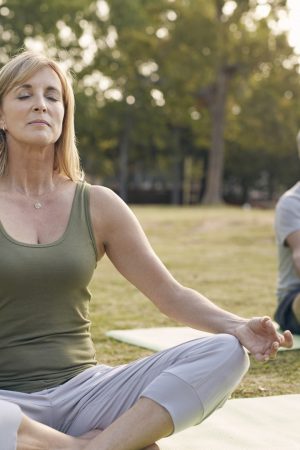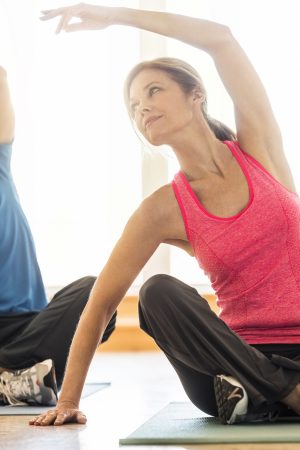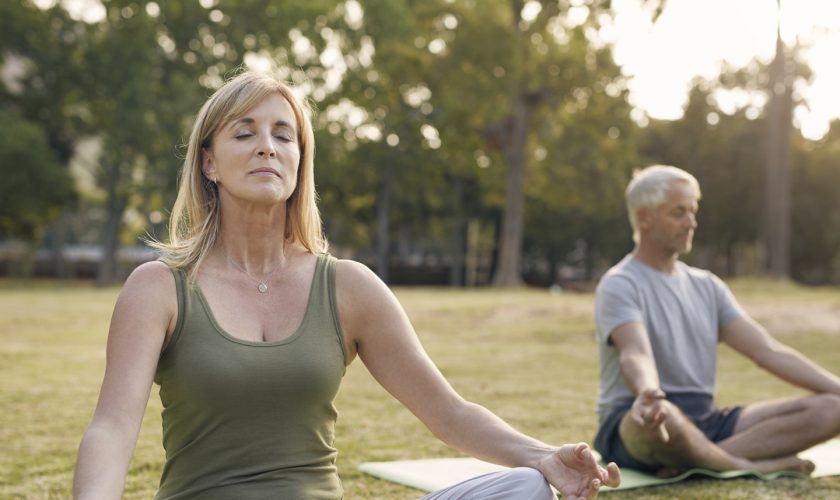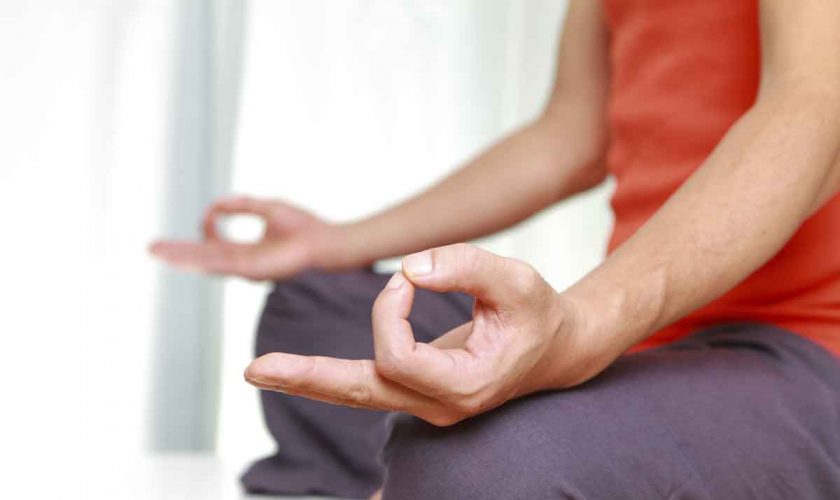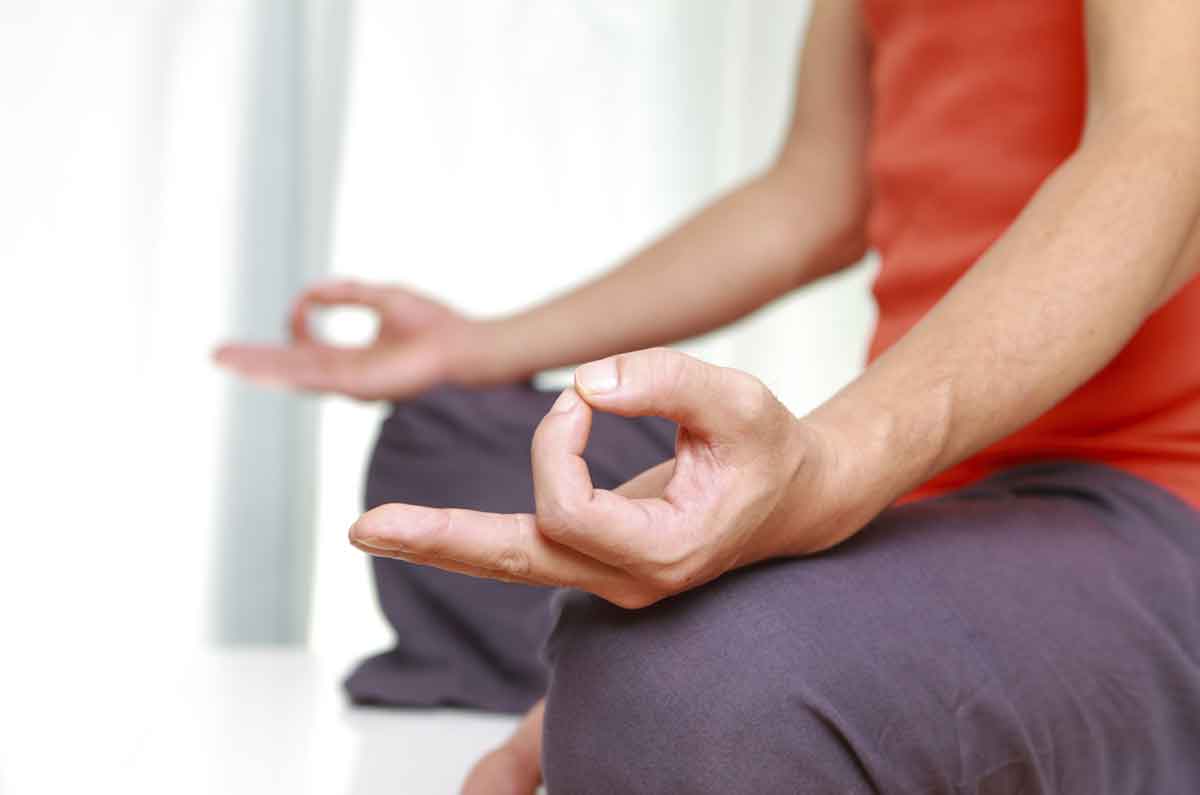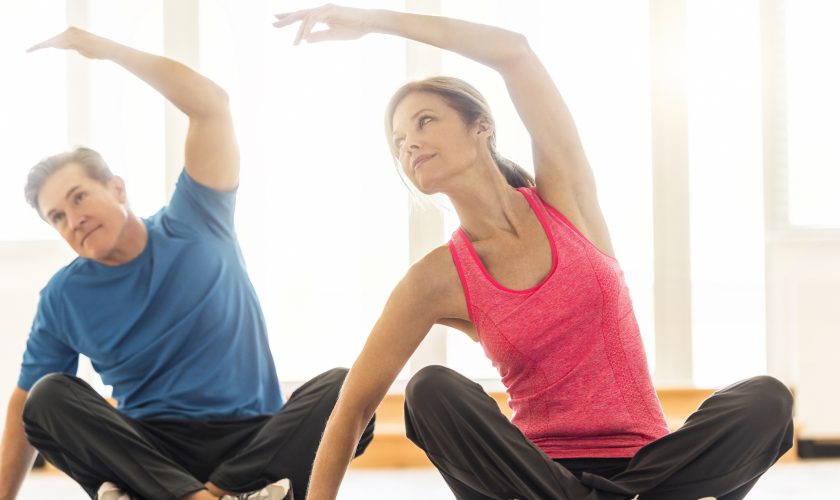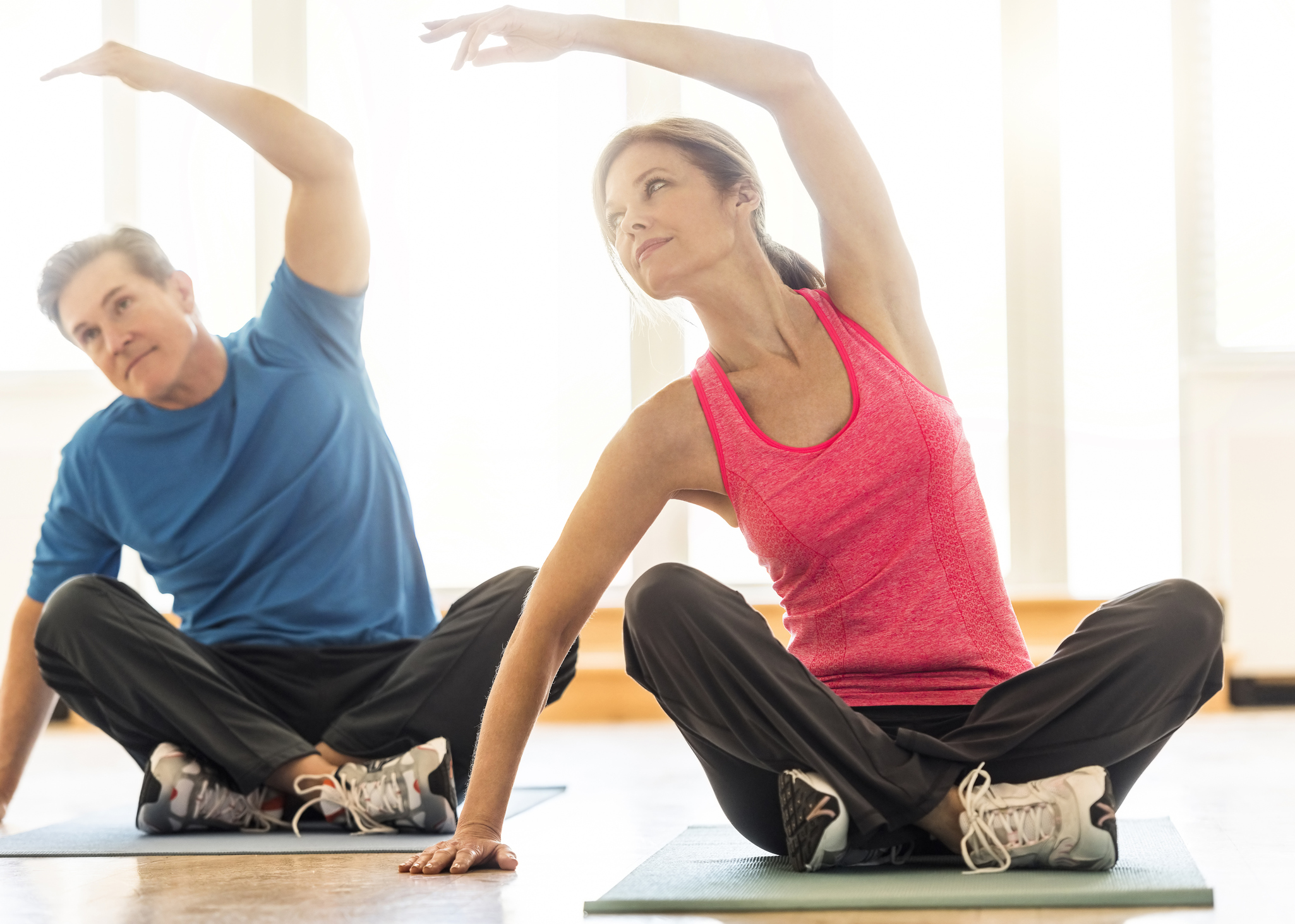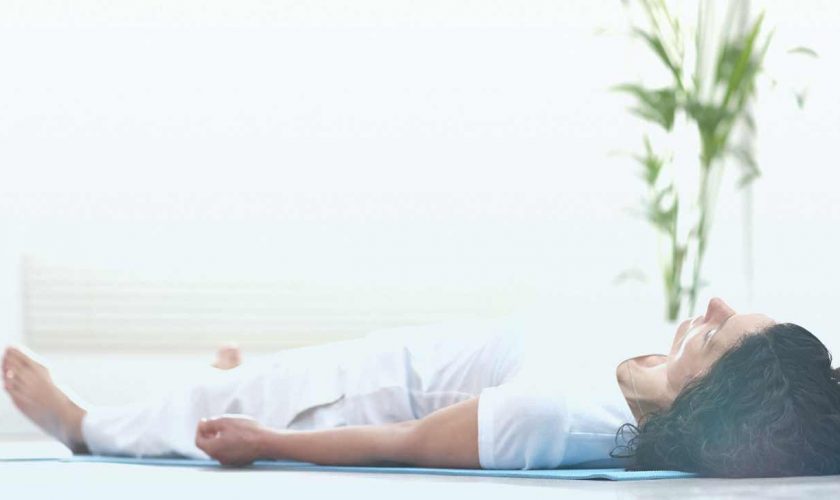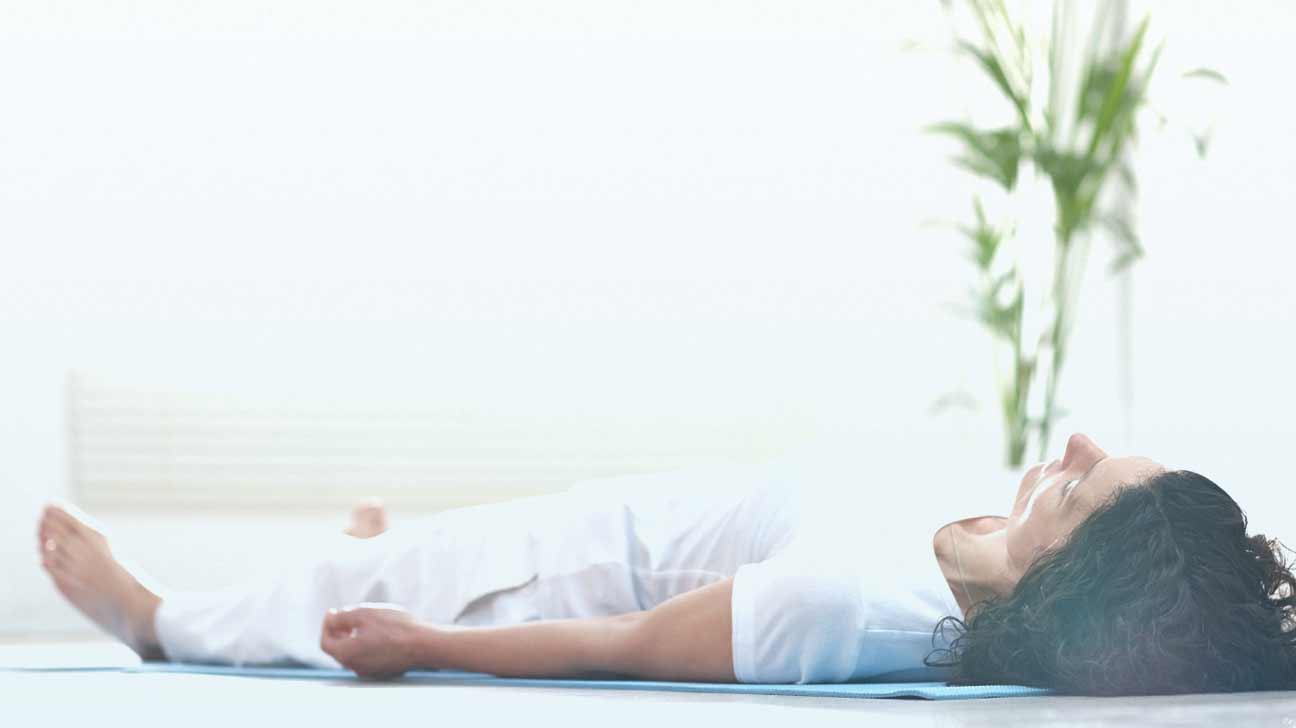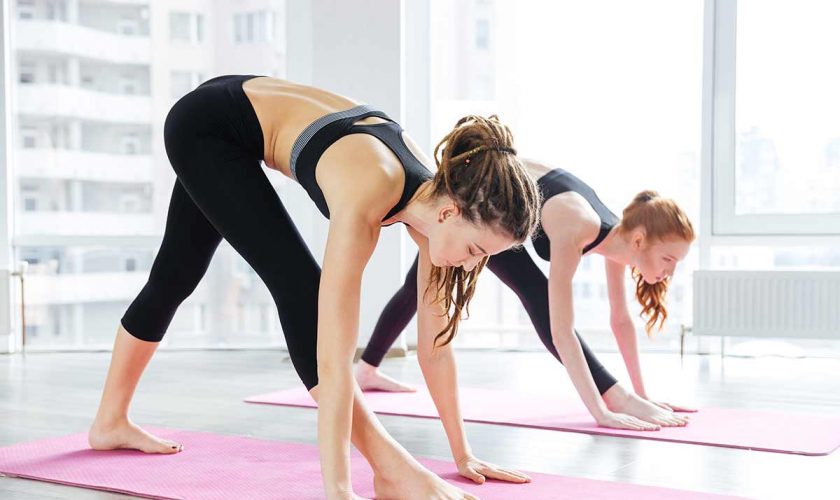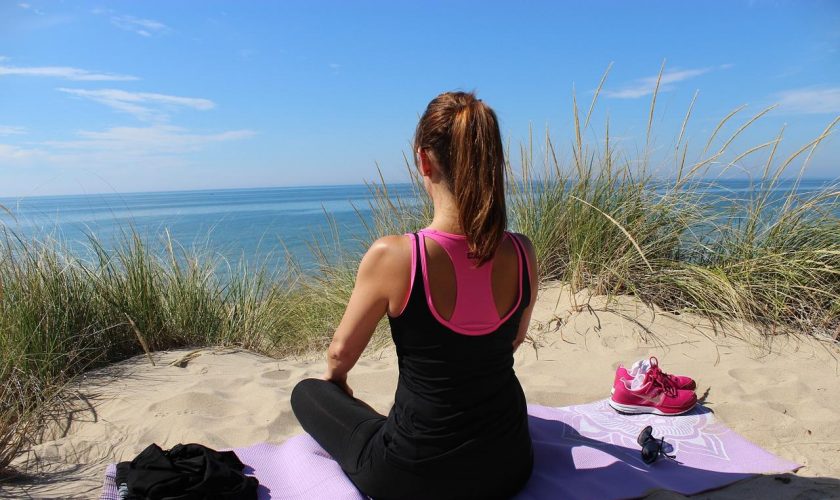That time of the month often comes with some uncomfortable, inconvenient, and painful effects. With over eighty percent of women suffering from period-related pain at some point in their lives, it’s important to understand how to treat cramping holistically.
Yoga has proven to be a helpful tool in managing these negative effects associated with menstruation; so instead of self-medicating or just skipping out on everyday activities, you can turn to yoga to soothe aches and pains.
7 yoga poses to avoid when you’re on your period
When you’re on your period, chances are the last thing you want to do is drag your bloated, lethargic body to a yoga class and get bendy whilst holding your period farts in and worrying that you’re blobbing through your yoga pants.
So here are seven poses you might want might to keep a beady little eye on during your time of the month.
Handstand
As well as being an inversion, handstand is a powerful asana, which you just might not have the energy for during your period.
Headstand
If the rest of the class are trying to jump into headstand and you just want to jump into bed, try supta baddha konasana, where you lie on your back with the soles of your feet together.
Shoulderstand
Try legs up the wall instead – all the benefits of draining the blood from your legs without lifting your pelvis and pissing off your uterus.
Plow pose
Inverting can make the blood vessels in your uterus swell, causing you to bleed more. And nobody wants that.
Scorpion pose
As well as sending your blood the wrong way, scorpion can put an awful lot of pressure on your back, which might not be ideal if you get back pain during your time of the month. And probably won’t have you laughing like this lady.
Crow pose
Crow requires the activation of uddiyana bandha (your abdominal lock) which can increase heat in the body, leading to more bleeding. Not ideal. Unless you love throwing money at tampon manufacturers.
Bow pose
Bow can actually be really useful in getting rid of that pesky period bloat , but it can also increase pressure on your back, so go easy with this if you get a sore back during your period.
Yoga Poses to Relieve Menstrual Cramps
Along with breath work, the poses below will help clear the mind while relieving pain and discomfort. These poses are considered Yin Yoga postures and when completed in Yin fashion (i.e., holding passive poses for 3-5 minutes), the benefits are enhanced through a deep stretch while getting in touch with the sensations of the body and mind.
So without further ado, here are 6 yoga poses to relieve menstrual cramps AND help soothe your mind.
Child’s Pose
Child’s pose is the go-to resting pose in most active yoga classes. With many benefits, the pose is a great option for those suffering from menstrual pain originating in the back. By gently stretching the low back muscles, Child’s pose will soothe back aches while also quieting the mind.
Forward Fold
Counteracting compression, Standing Forward Fold pose lengthens the spine and stretches the hips. It also help ease the pain that radiates down the legs and around the back by stretching the hamstrings, calves, and back.
Knees-to-Chest Pose
One of the most effective poses for menstrual pain is the Knees-to-Chest pose. This feel-good posture relaxes the lower back and abdominal muscles, relieving tension and reducing pain. Knees-to-Chest pose also increases circulation to the abdomen, aids the internal organs, softens the mind, and reduces anxiety.
Supine Twist
Twists are believed to stimulate, detox, and refresh the inner organs by “wringing out” the body. Holding a Reclined Spinal Twist for a few minutes while tuning into the breath will help ease the nerves during menstruation, as well as any accompanying abdominal pain.
Cat/Cow
More active than the previous poses, moving slowly through the Cat-Cow pose will warm up the body, which is known to relieve menstrual cramps. In addition, these poses target the back and abdominal muscles—stretching and toning them. This gentle flow will also help with coordination and emotional balance that may be altered during the menstrual cycle.
Savasana
The final resting pose that usually denotes completion of a yoga class is Savasana, also known as Corpse pose. This simple supine posture requires very little effort but reaps a handful of benefits.

